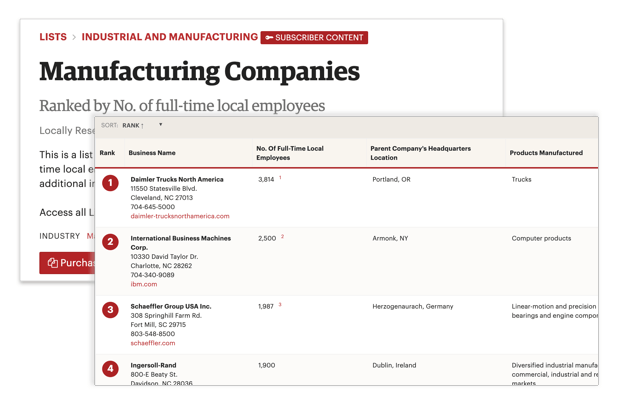Working as a freelance IT project manager is an attractive move for anyone who wants greater control over their careers. While full-time employment presents a financial safety net, it can become limiting and predictable in the long run.
Freelancing gives you more flexibility with the following benefits:
- Working independently from anywhere you want
- Setting your hours to set a work-life balance
- Choosing assignments and projects that interest you
- Charging a higher rate by offering your expertise as a solution
- Making new connections in the industry
Freelancing is also appealing during a difficult economic downturn. Companies that have freeze-hired are outsourcing work to consultants who can work on an as-needed basis.
In this article, I’ll explain how you can become a freelance IT project manager. I’ll also share my best tips on how to position yourself and set yourself up for success.
Step 1: Create Your Positioning
Clarifying your positioning means defining the kind of work you want to do and who you want to work with. This is the first step because a clear positioning helps you stand out from the competition. Even with limited experience, you want people to see you as an expert.
How do you do this?
First, think of an area where you have the most experience. Is it managing SAP projects? Or leading IT transformations during mergers and acquisitions? Or maybe data security projects? This will be your starting point.
Picking a discipline where you have little experience in presents a higher barrier to entry. Clients expect a high level of expertise and first-rate results, and they will surely ask about your experience in your field.
Additionally, companies keep a sharp eye when hiring external service providers. They want to work with professionals who have the highest expertise—the kind of talent that is not available in-house. So, pick a field where you consider yourself top-drawer.
The other part of your positioning is deciding which companies you want to work for. Think about your ideal client. What industries can you serve best? If you have experience in the telecommunications sector, then you should market your services to telecommunications providers. If you have experience in the aviation industry, then reach out to airline companies.
Another thing that you should consider is the ideal company size of your clients. Do you want to work with large corporations? Or do you prefer working with small and medium-sized businesses?
There is no right or wrong here. The question is always what kind of company is most likely to hire you and pay you well for your services. Also, consider your personal preferences. What kind of people do you like to work with? If you are going to spend considerable time working with people, they might as well be the ones you enjoy working with.
Once you’ve narrowed down your options, you can create a positioning statement to summarize what you do. Here’s an example:
“I help medium-sized companies in the transportation sector to roll out business analytics solutions.”
Step 2: Create Your Website and Update Your LinkedIn Profile
Before you reach out to companies, make sure that you have the basic marketing materials ready. A simple website can help you get your freelance career off the ground.
Your website doesn’t need a lot of content to catch attention. But it needs to have all the important information. Don’t spend too much time on the design — you can work on this later on.
The purpose of having a website is to show companies who you are and what you have to offer. It is a medium that clients can use to connect with you.
So, what should your website contain? Here are the basics:
- A profile of yourself and a photo. Your profile lets potential clients know who you are and what you do.
- Your project portfolio. List all the projects you’ve done as an employee or as a freelancer if you’ve done ad hoc jobs in the past. Be specific and highlight your achievements.
- Your positioning statement. Be as concise as possible. A clear positioning statement can help you present yourself as an expert and not just another freelancer.
Any testimonials, if you have any. - Recommendations and accolades from employers, colleagues, and other clients are a good barometer of whether you’ll be a great fit with your target company.
- A way to contact you. Make it easy for clients to reach out to you. Put your phone number and email address where they are easily seen. You can also add a contact form to your website.
Setting up a personal website is not complicated. Go to a hosting provider like BlueHost.com to buy a hosting service and a domain. For the domain name, you could use your first name and last name (e.g., johnehrhardt.com) or you could use your freelance business name.
In addition to a website, your LinkedIn profile is also an important part of marketing. It provides a snapshot of your employment history, past projects, voluntary work, and skills. In your profile summary, write your positioning statement and your value proposition. Need inspiration? Check out the profile of other freelance IT project managers.
Step 3: Make a List of Potential Clients
So, you’ve clarified your positioning and offer and set up a basic website. Now, it is time to create a list of potential clients and companies to target.
Why is this important? Instead of targeting just about every company, a list can help you focus on the businesses that you want to partner with. Having a list of prospective clients makes it easier to track how many you’ve pitched your services to and how many have responded.
To create a list, write down the names of companies that you want to target. It makes sense to start with the businesses in your region. Just create a blank sheet in Excel or Google sheets and put down the company name, website, email address, or phone number.
What are the suitable businesses to target?
- IT consulting firms
- software companies
- IT-contracting firms
- IT service providers
- companies you chose in your positioning
If you’re wondering where to start, the Internet already has a list of companies that you can use. Your local Chamber of Commerce has a directory of companies organized by industry. You could also do a Google search and type in phrases like “top manufacturing companies in the Charlotte area”.

Another way is to use LinkedIn to search for companies by city or region. LinkedIn also has a paid service called LinkedIn Sales Navigator, which is super helpful for finding potential clients.
Step 4: Reach out to Companies
What are the suitable businesses to target?
- IT consulting firms
- Software companies
- IT-contracting firms
- Companies you chose in your positioning
If you’re wondering where to start, the Internet already has a list of companies that you can use. Your local Chamber of Commerce has a directory of companies organized by industry. You could also do a Google search and type in phrases like “top manufacturing companies in the Charlotte area”.
Another way is to use LinkedIn to search for companies by city or region. LinkedIn also has a paid service called LinkedIn Sales Navigator, which is super helpful for finding potential clients.
This is where the rubber meets the road. You are going to reach out to companies that might be interested in your services.
Note that your success as a freelance project manager largely depends on the effort you put in to find clients. In the end, it’s a numbers game. The more companies you reach out to, the higher the odds of landing a contract.
The reason why many freelancers are not successful is that they don’t put enough work into finding clients. I see this all the time. People come to me and they say, “Oh this doesn’t work”, or “Nobody wants my services”. When I ask them how many companies have they contacted, the number is quite dismal.
This is ridiculous because you will never find a client if you stay at that level. It’s not uncommon to contact 100 companies or even more to win your first project. So, you have to put in a lot of effort, and I recommend systematizing your outreach and contacting at least 10 companies every day.
Systematizing means having standard scripts to use in your email so that you don’t have to write everything from scratch. It also means to have some sort of tracking tool where you can document your email conversations and interactions with clients. A good solution is HubSpot, which is a free CRM tool with premium options that you can use for prospecting.
Don’t overcomplicate your outreach process. Your script can be as simple as:
“Hi, John, My name is Andrew, and I'm a freelance IT project manager with a lot of experience in the manufacturing sector. I can take over project coordination work for you if you don't have the internal resources. Does that sound interesting for you?”
Advice from my side: Follow up your lead. Clients may be busy with other stuff, and they may not respond to your first email. Make it a habit to follow up after a few days.
Step 5: Manage Your First Project as a Freelancer
If you put in the work and reach out to a lot of companies, your effort will eventually pay off. You will land your first gig as a freelance IT project manager.
Your first project doesn’t have to be huge. Even a small engagement like a coordination job can be a great win. Your goal should be to learn as much as you can from this first client. This will allow you to hone your skills and boost your confidence.
Even if your first freelance project may not be the most exciting one, try to make the most out of it and deliver an excellent job. If you do a great job the client may hire you again, and you can get great testimonials that you can put on your website. The company may also recommend you to other partners and you can land further projects this way.
Whatever your first project may be, take it as a learning experience. Even if it does not go that well, try to understand the lessons and improve. It’s always good to adopt a positive mindset and not to take setbacks as a failure. Being a good freelancer and making a lot of money from it takes some practice, and don’t be disheartened if your first gigs are maybe a bit bumpy because you’re just not as experienced with handling clients.
Can you be an effective IT project manager?
Anyone can be successful in whatever field they choose if they are strategic in their approach. By starting with a clear position, you will have a good grasp of the things you want to do. Sometimes, finding clients can be a challenge, but if put in the effort by reaching out to more prospects, you will have a better chance of scoring a job.
Once you have a contract in place, do a great job. Ask clients for their feedback—this is a great way to learn and improve on your skills. Adopt a positive mindset and take your clients’ opinion as a learning experience. If you do these things, you will soon be on your road to success.
Author
-
Hi, I’m Adrian, a Senior Project Manager and the Creator of Tactical Project Manager, where I teach a pragmatic approach to project management. Led large-scale IT and business projects for over 10 years. My goal is to enable you to lead any project with confidence.
View all posts



